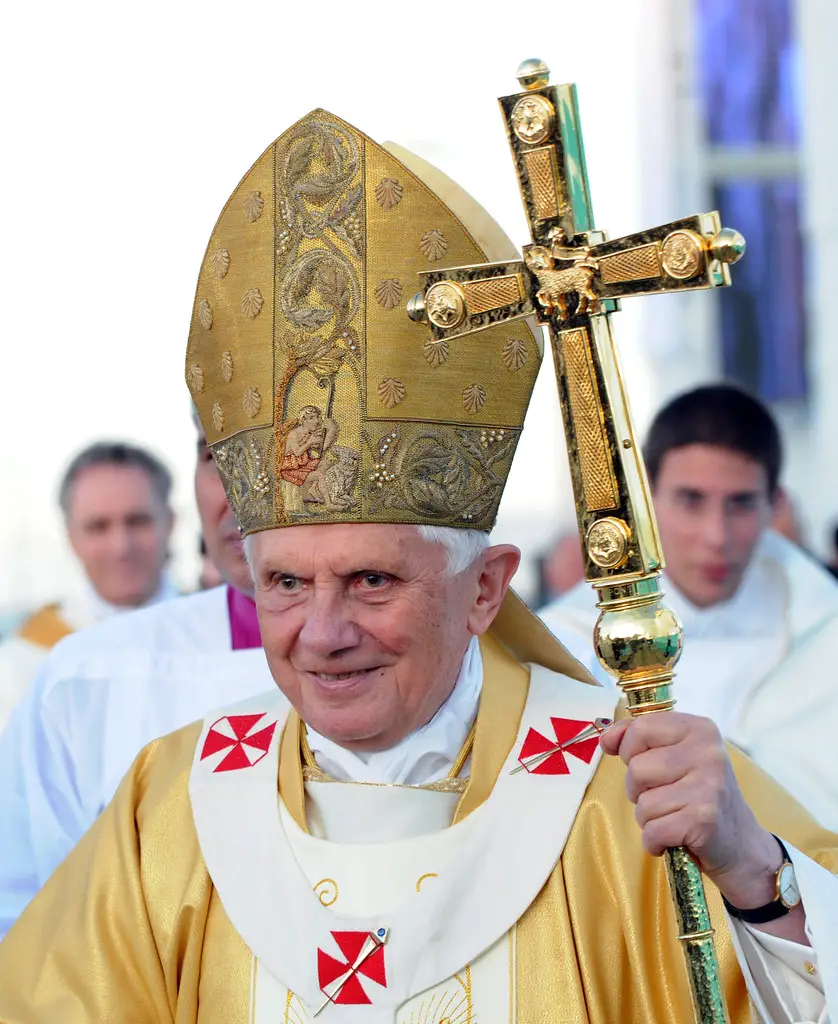Catholic facts
Why bishops remove their miter (hat) before genuflecting
In the rich tapestry of the Catholic Church’s liturgical traditions, many rituals and symbols hold deep meaning. Among these, the miter, a distinctive headdress worn by bishops, is a symbol of their episcopal authority and responsibility. However, observant individuals may notice that bishops often remove their miter before genuflecting. This seemingly simple act holds profound significance, connecting faith, humility, and reverence. In this article, we will explore why bishops remove their miter before genuflecting.
Understanding the Miter
The miter is a pointed, hat-like headdress traditionally worn by bishops during liturgical ceremonies. Its origin dates back to the early Christian Church, and over the centuries, it has evolved to symbolize the authority of a bishop. The two peaks of the miter are said to represent the Old and New Testaments, signifying a bishop’s role in interpreting and teaching Scripture. While the miter’s design varies among different liturgical traditions, its purpose as a symbol of episcopal authority remains constant.
The Act of Genuflection
Genuflection is a profound gesture of reverence, humility, and adoration practiced by Catholics. It involves bending one’s knee to touch the ground, often done when the consecrated Eucharist is present in the tabernacle or during specific moments in the Mass. The act of genuflection is a sign of profound respect for the real presence of Christ in the Eucharist and is deeply ingrained in Catholic tradition.
The Symbolism of Removing the Miter
The act of removing the miter before genuflecting carries several layers of symbolism:
- Reverence for the Eucharist:
- The primary reason bishops remove their miter before genuflecting is to show deep reverence for the Eucharist. By humbly removing this symbol of their episcopal authority, they acknowledge that Christ’s presence in the Blessed Sacrament surpasses any human authority. This act emphasizes the Eucharist’s central importance in Catholic worship.
- Theological Significance:
- The removal of the miter signifies a theological understanding of the hierarchical structure of the Church. It illustrates that even though bishops hold a position of authority, they are ultimately subservient to Christ, whose presence is manifested in the Eucharist.
- The Necessity of Humility:
- The miter, with its pointed peaks, is a visible symbol of authority. Removing it represents an act of humility and a reminder that humility is an essential quality for spiritual leaders. Bishops, by setting aside their miter, convey the message that they stand in humility before Christ.
- Uniting with the Congregation:
- The removal of the miter makes the bishop more relatable to the congregation. It emphasizes that, like all the faithful, the bishop is a humble servant in the presence of the divine.
Conclusion
The act of removing the miter before genuflecting is a powerful symbol in the Catholic Church. It underscores the central role of the Eucharist, the necessity of humility, and the reverence shown to Christ’s presence in the Blessed Sacrament. It reminds the faithful that bishops, despite their authority, are servants of Christ and His Church. This seemingly simple act carries profound theological and spiritual significance, enriching the liturgical experience for all those who witness it.
About Author
























